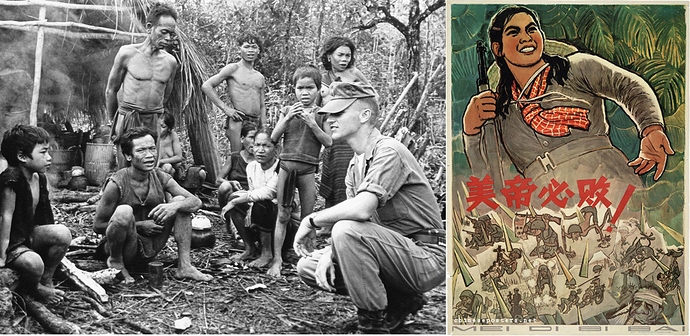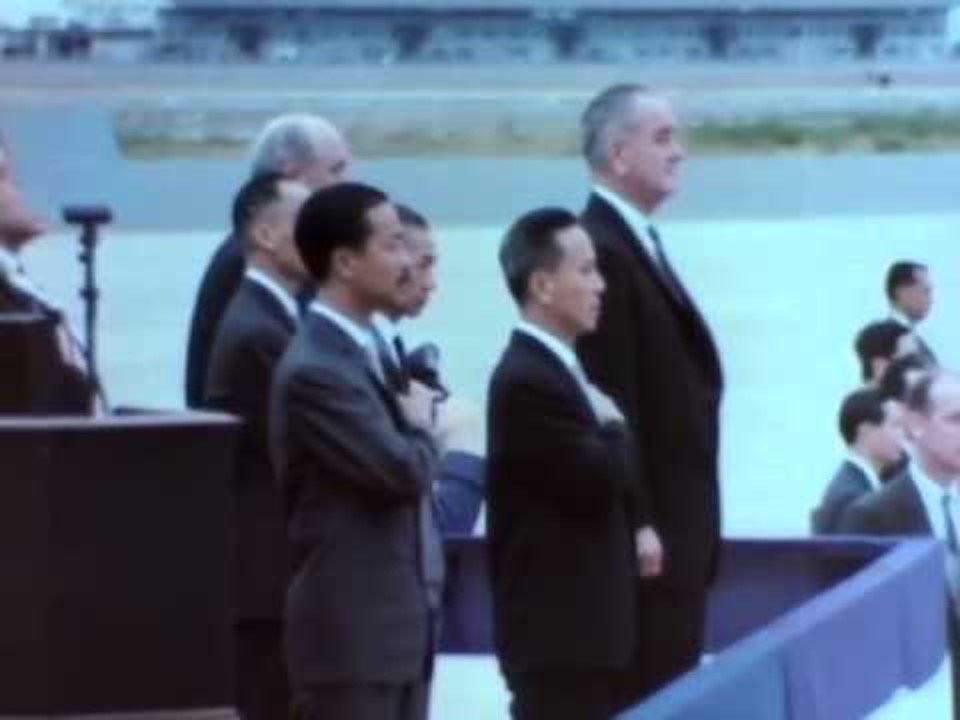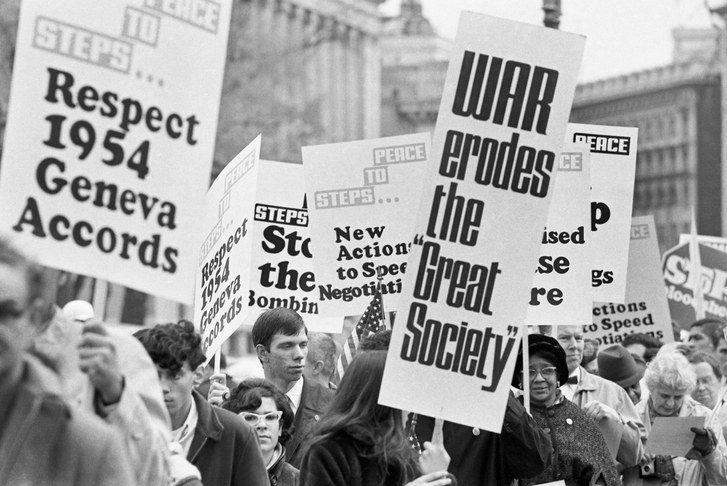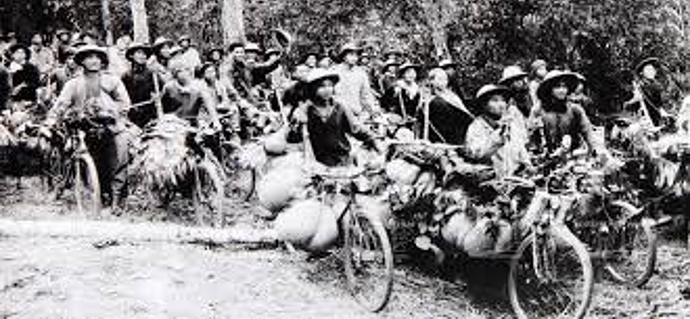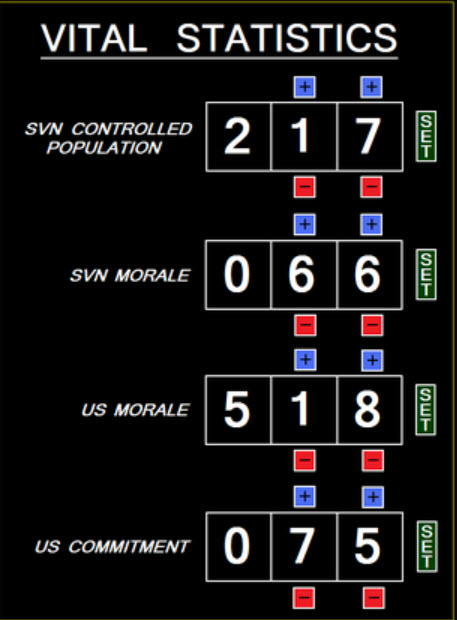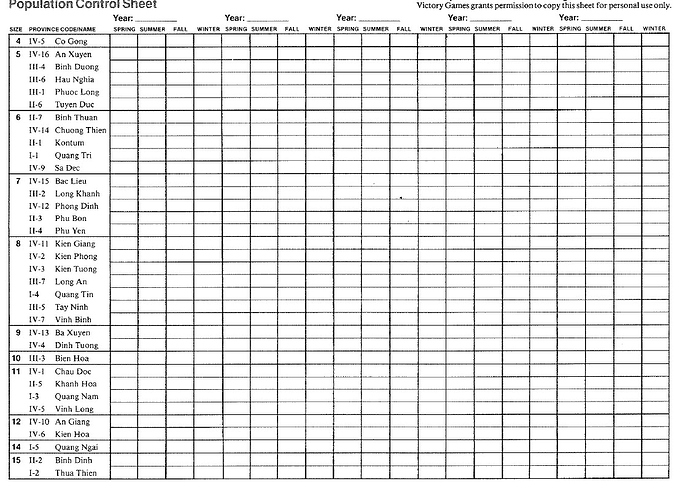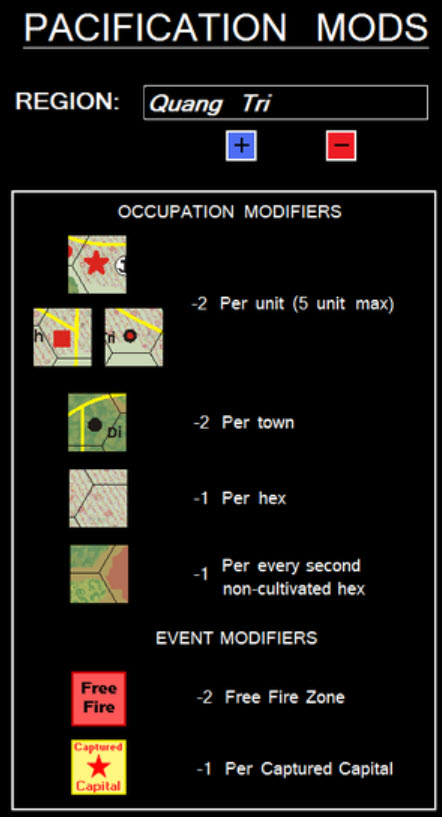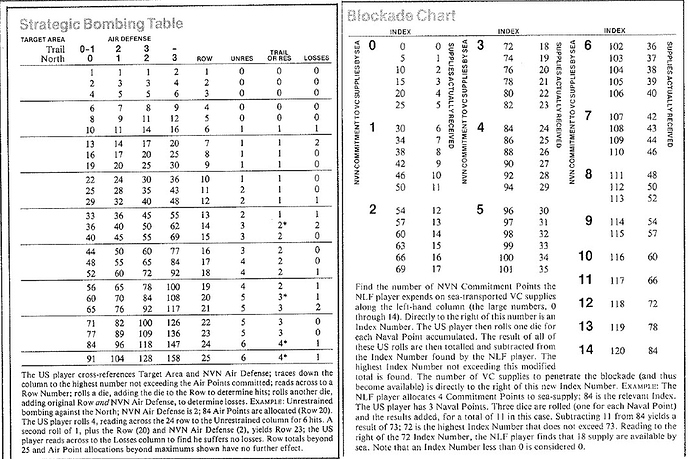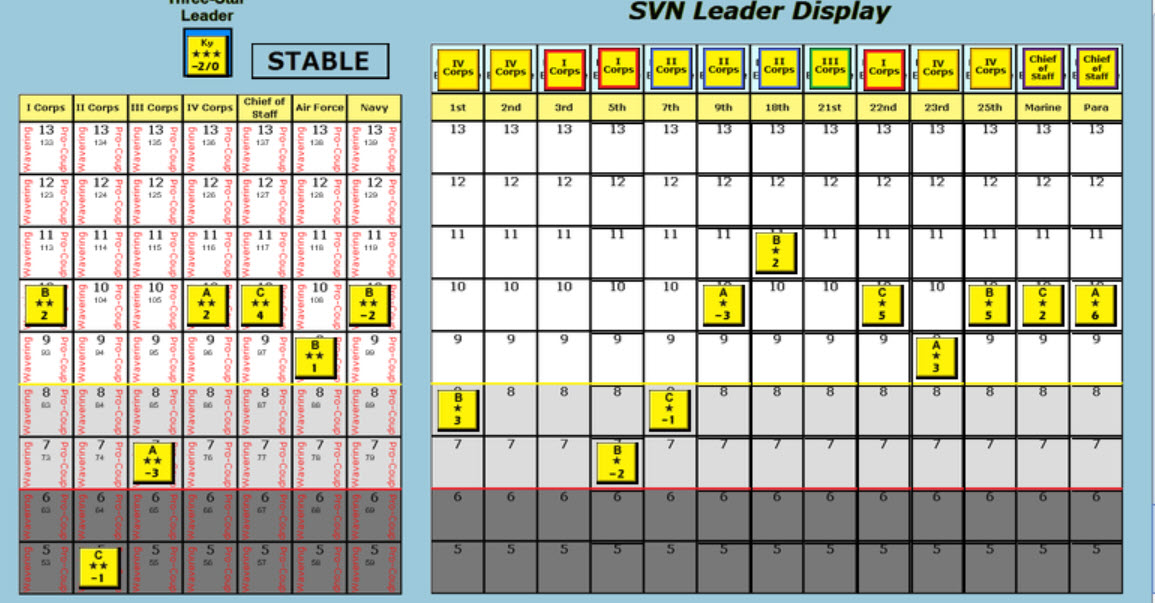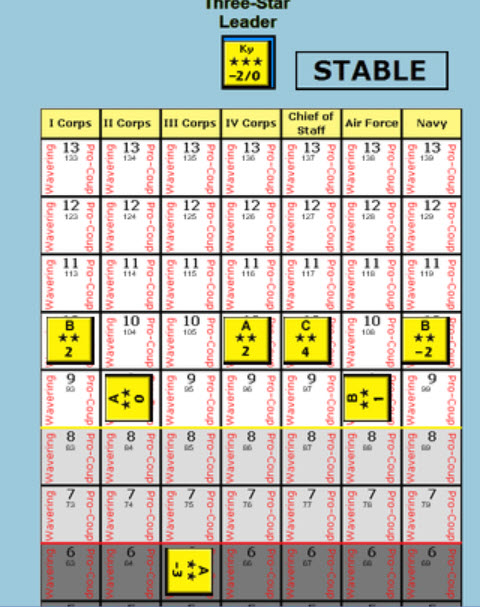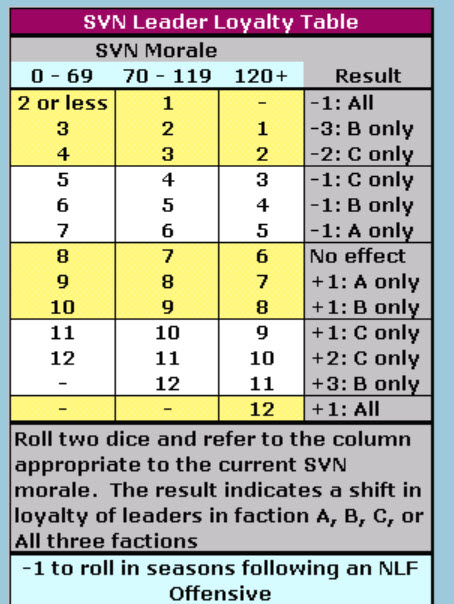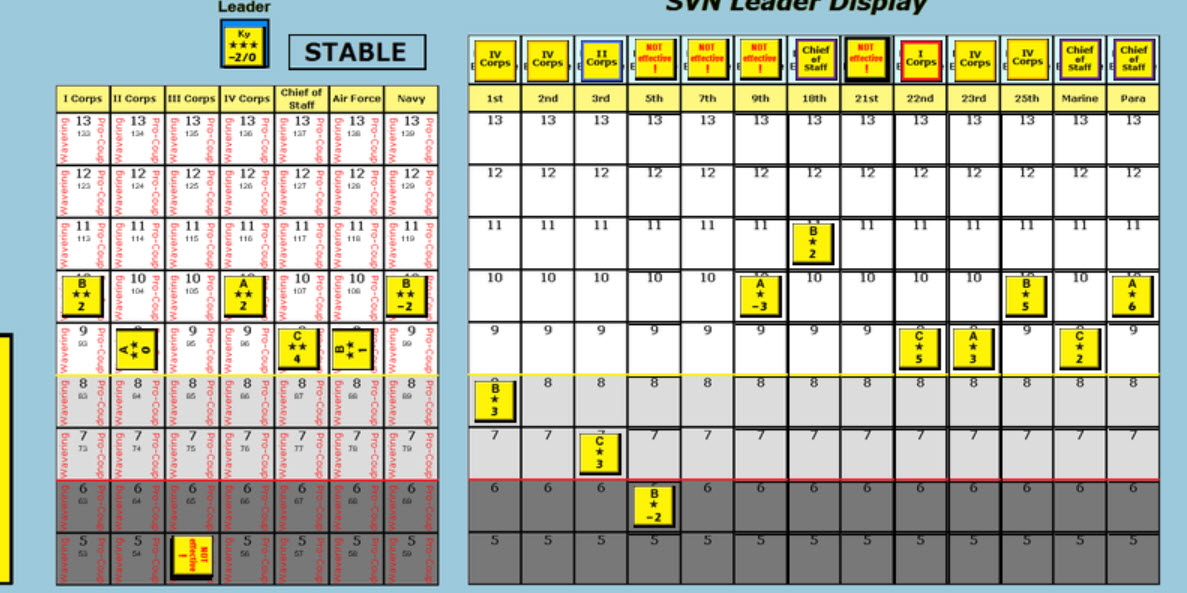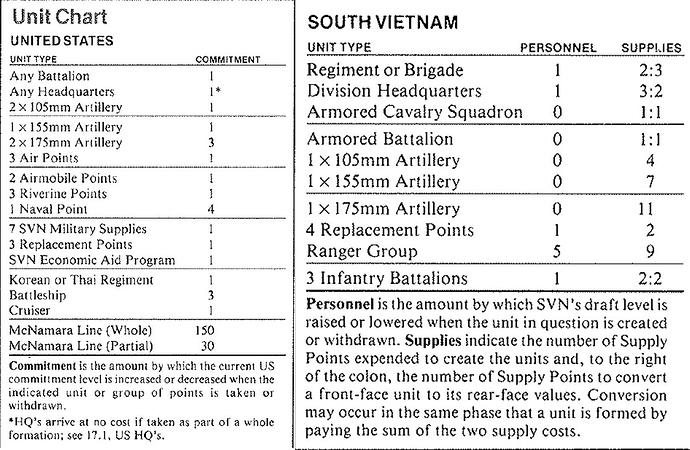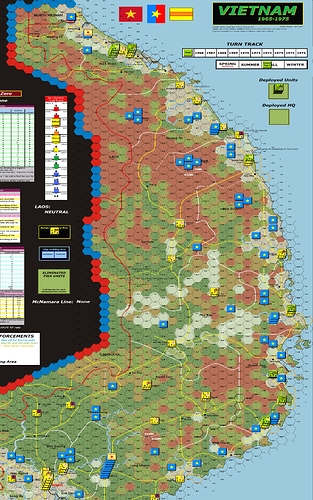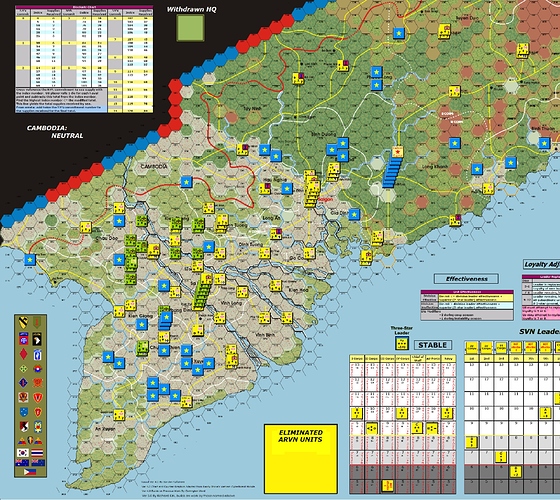Turn! Turn! Turn!
Vietnam 1965-1975
1965 Fall Narrative, Interphase Exposition and Fall Interphase Resolution
“To everything there is a season and a time to every purpose, under heaven. A time to build up, a time to break down. A time to dance, a time to mourn. A time to cast away stones, a time to gather stones together."
Take a breath, cuddle something, get a drink, and then please hit play before reading and turn to the maximum volume your brain or household will allow.
The Byrds (lyrics by Ecclesiastes, Adapted by Pete Seeger). Columbia. Released October1, 1965.
In South Vietnam’s Provinces
The downward trend in the provinces continued to favor the communists but overall, the increased presence in the countryside by FWA Forces and Communist heavy-handed (and in some cases, brutal) occupation policies in Quang Tri and Long Khanh backfired somewhat as the populaces there, while acquiescing to their occupiers, didn’t embrace their policies. As well, there was an up-tic of pro-government support in III and IV Corps, as NLF cadres had abandoned the former for the offensive, and US-ARVN Combined Operations had disrupted the VC presence there. However, the downward trend continued, nonetheless a USAID and CIA estimate released September 2, 1965 indicated that the population under government control likely had fallen by 250,000 in the Summer, a decrease of 2%. MACV, USAID and the Agency had muted confidence that the increase in nation-wide morale due to aid programs and the increasing US presence, the clearing of occupied capitals and the disruption of VC efforts in the Mekong Delta likely would stop, and possibly reverse this trend by year’s end.
The Presidio Conference
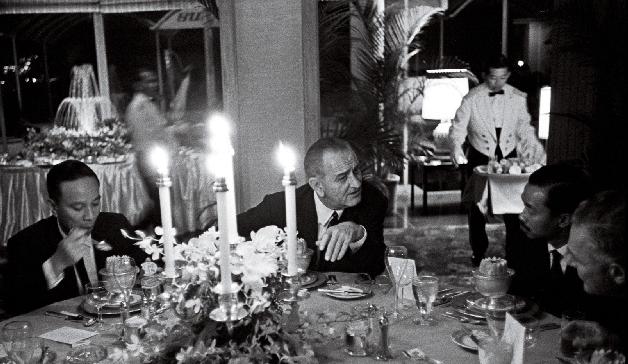
Nguyen Van Thieu and Nguyen Cao Ky, the President and Prime Minister of the Republic of Vietnam, respectively, arrived at San Francisco International Airport on September 6, 1965, accompanied by ARVN Chief of Staff, General Cao Văn Viên. They were escorted to the Presidio for a three-day conference with President Johnson, Secretary of Defense McNamara, Secretary of State Dean Rusk General Earle “Bus” Wheeler, Chairman of the Joint Chiefs of Staff, and several other US military officials. Discussions were held regarding the goals and objectives of the US-South Vietnamese military campaign as well as what aid and social progress could be made in the country to defeat the communist aggression. The Prime Minister and General Vien made clear that a continuation of the unrestricted bombing of the North would enhance the position of the government, hurt the communists militarily and increase the morale of the populace. As well, General Vien advocated a resumption of covert reconnaissance and tracking activities off the coast of North Vietnam. Both were eager to clarify when more US troops might be arriving, given the casualties the ARVN took in the Summer and the gains of the NLF Offensive.
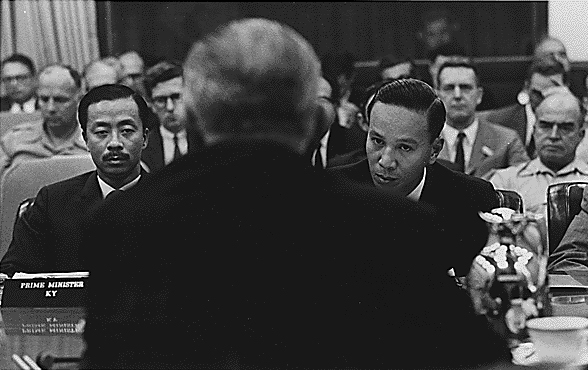
Privately, MACV Commander General Abrams, in consultation with the JCS and Secretary McNamara, planned no immediate Infantry or Armor increases in the Fall, though several US Army Artillery Battalions, three USAF Fighter-Bomber Squadrons of F-105Ds and some US Replacement cadres were bound for theater. The 1st Air Cavalry Division was slated to depart Fort Benning in late November, though there had been delays in detaching and replacing cadres to keep the 11th Air Assault Division intact as a training Division for the Airmobile unit replacements that would be needed for the long Counterinsurgency being contemplated. As well, there was no plan to resume activates off the North Vietnamese coast, as the President was wary that reserve call up and US projection of force in Vietnam might provoke a reaction by the People’s Republic of China. “I don’t want 500,000 screamin’ Chinese coming across the border!”, he told Secretary McNamara, “But if Ky sleeps better in his bed at night if we bomb them [the North], well, fine.”
The South Vietnamese delegation was informed that more troops should arrive by years’ end, and more in 1966, however not in the next few months. More military aid en route should outfit another ARVN Division with the latest equipment, as well as provide enough equipment to outfit an additional ARVN Independent Medium Artillery Battalion. Also, approximately three regiments-worth of US Medium and Heavy Artillery would be arriving in the next week. Air assets would also be increased. Naval efforts off the coast of North Vietnam would not be resumed, however the North would continue to be bombed in force, and these efforts would extend to the Trail in the vicinity of the North Vietnamese entry points into Laos.
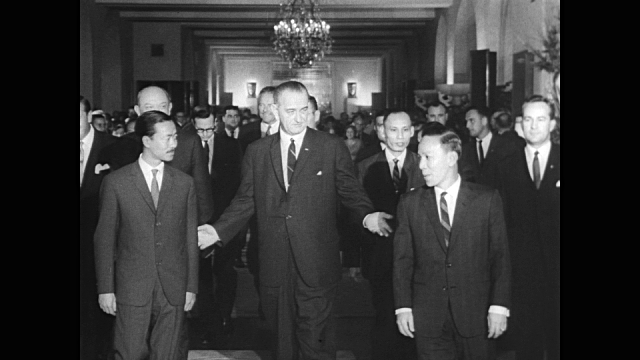
The US representatives also pressed for more democratic reform in South Vietnam in conjunction with limited land redistribution and other social reforms and programs that would aid counter-insurgency efforts in the South. The President promised that economic aid and expertise would continue to arrive in South Vietnam, stating, “If we can build the TVA here, well we sure as hell can make that Mekong deliver electricity to every farmhouse and ranch in South Vietnam!”
Pledge of the Declaration of San Francisco, 1965
United States President Lyndon Johnson disclosed a declaration in a public statement on September 9, 1965. The document content was authored as three parts proposing the intents of the joint governments and their common diplomatic commitment.
I. A commitment by The United States acknowledging South Vietnam was being attacked by guerrilla and jungle warfare pursued by the North Vietnam communist state and promising to aid South Vietnam in opposing this aggression.
II. A resolution by the Republic of Vietnam to combat social injustice, disease, hunger, ignorance, and political apathy, and to promote several economic and social terms for promoting peace and social justice in South Vietnam.
III. The United States pledged to aid agricultural education for new species of corn, rice, and vegetable seeds; fund construction projects for rural Vietnam; aid the Republic of Vietnam in controlling economic inflation; fund, promote and enhance education and health programs; aid in safeguarding refugees from communist aggressors by funding and staffing programs for the care and education for South Vietnamese children and families.
Strategic War
Interdiction of several convoys bound for the Trail were successful as well as bridges at intersections 11 and 15. However, crew reports indicate POL and industrial infrastructure targets have been dispersed by NVN. Unless reinforced, future strikes may reach a limit of effectiveness given available means.
Cable from COMUS2NDAIRDIV to CINCPAC to August 30, 1965.
The 2nd Air Division and Task Force 77 launch nearly all available bombers against targets in North Vietnam. The Haiphong Railyards and Port were hit particularly hard again, as was Vinh’s seaport and industrial center and the city of Đồng Hới, targeting depots thought to house supplies headed south via sea and the Trail, respectively. The strikes were determined to be of limited effectiveness in degrading capabilities given the force applied, as the North Vietnamese began to disperse vital POL stocks to smaller, hidden locations. An attempt to engage what intelligence reports indicated was a hidden fuel depot in Vinh, struck what the North Vietnamese government claimed was a Hospital, and a French Television crew filming a documentary in Hanoi were escorted to the site a week later. As well, the Trail was interdicted, with the Nape Pass and the Mụ Giạ Pass as primary targets. There were no aircraft losses and the strikes were determined to be a success.
The commitment of US Ground Troops and the first reports of US Casualties, the International Press’ mild surprise at the NLF Summer Offensive, the bombing of the Vinh Hospital and resultant footage released by the RTF to other networks internationally, led to an increase in protests in the United States against US involvement in the conflict. A peace march was held in San Francisco from Market Street to the Embarcadero where Joan Baez and Pete Seeger hosted a “Free Folk Peace Concert” where Peter, Paul and Mary and a visiting Donovan also performed. There were also organized peaceful protests at Columbia and Brown Universities. As well as a march on Pennsylvania Avenue organized by Concerned Clergy for Peace and American Physicians for Peace, with Dr. Benjamin Spock a prominent speaker.
The suspension of US covert activities off the coast of North Vietnam hampered US interdiction efforts greatly. CIA estimates indicated that supplies by sea reaching South Vietnam may have reached a new high, estimating that more than 1,000 tons may have been received by PLAF logistics units in South Vietnam via the ocean route.
South Vietnamese Politics
Prime Minister Ky and General Vien, days upon returning from San Francisco, attended a meeting with General Abrams and Ambassador Taylor where they were presented with evidence of intrigues to overthrow the government by II Corps Commander Lieutenant General Do Cao Tri and III Corps Commander Lieutenant General Nguyen Bao Tri. Their removal was recommended. General Vien was eager to be rid of the latter, but Ky prevaricated due to his family connections. They were of opposite opinions, regarding Do Cao Tri. General Vien, felt he could be rehabilitated if courted, and valued his military competence saying, “There are worse men available. At least I know what he can do.” However, Ky leaped at the opportunity, seeing the US evidence as a trump card to overcome Vien’s objections. Do Cao Tri was replaced by Lu Mong Lan, a Ky loyalist. Nguyen Bao Tri was informed of the meeting by private informants possibly impacting his loyalty to the regime. As well, Ky intervened on behalf of Nguyen Huu Co, the 5th Division Commander and Nguyen Van Chuan, the 7th Division Commander, as Vien wanted them relieved for incompetence during the NLF Offensive. Ky’s actions, taken for political and possibly venal reasons, created a small rift between him and Vien, as well as officers aligned to Vien. The delayed impact of the Summer’s USAID program deliveries and personnel, and the arrival of those for the Fall season, combined with the tangential economic boost and direct military effects of the increasing US Military presence in the country boosted South Vietnam’s morale, according to provincial USAID adivisors.
North Vietnamese Politics

In Hanoi, the continued bombings of the North and the successes of The Summer General Offensive and Le Do Uprising 1965 increased the Politburo’s overall resolve to continue to increase it’s military commitment to the conflict, as more Soviet and Chinese aid was promised to be forthcoming. However, the losses incurred and the failure of the Offensive’s results to meet the rhetoric of Lê Duẩn’s Aggressive War faction seemed to give the upper hand to Giáp’s Revolutionary War faction. The NVA 1st Division was withdrawn North of Vinh, possibly to be broken down into cadres to join the struggle in the South, leaving only the Divisional Artillery in Con Thien. As well, several PLAF Regiments in South Vietnam appeared to disperse into composite Battalions, preparing to engage in protracted Revolutionary War in he Countryside, notably, 4 identified regiments in II Corps, 2 in Xuan Loc and one in the Southern Delta.
US Plans
In South Vietnam, on September 9, 1965 the US 2nd and 8th Battalion (BN)/12th Field Artillery Regiment (FA), the 6th BN/16th FA, the 1st BN/27th FA, the 2nd BN/31st FA and the 2nd BN/35th FA, all medium 155mm Howitzer Battalions, arrived in Cần Thơ in IV Corps. As well, the 8th BN/4th FA and the 6th BN/8th FA, 175mm Artillery Battalions arrived in Hue. Three USAF squadrons of F-105Ds and 3 replacement battalions of US Army troops arrived in Bien Hoa. Equipment arrived in-country to outfit and augment the entire 18 ARVN Division under its new commander, Major General Le Van Hung, and 14 Battalions-worth of replacement cadres were outfitted. One Battalion of ARVN Artillery were upgraded to the latest US 155mm howitzer models.
As Abrams prepared US and ARVN Forces for partnered operations in the Fall, the deliberations revolved around the retaking of Xuan Loc city in Long Khanh and Quang Tri Province as a whole. The PAVN withdrawal from the Nothernnmost province of South Vietnam made the latter a distinct, achievable possibility, much earlier than he or his Staff had anticipated. The recapture of Xuan Loc would be a bridge too far, unless ARVN elements could handle the job with minimal US assistance. The focus would still be on IV Corps, completing the clearing begun in the Summer.
NLF Strategic Shift
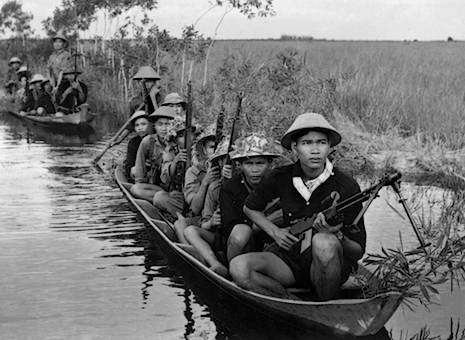
The Viet Cong appeared to increase its presence in II and III corps overall, especially in War Zone C, War Zone D and Kontum Province, all historically VC Controlled Zones, that had been emptied for the Summer Offensive. The NLF appeared eager to retrench, reclaim familiar terrain, and possibly move to harassment and ambush tactics after the limited gains of Summer 1965’s exertions.
Interphase Resolution (and Exposition)
Please hit play before reading and turn to the coolest, mellowest, whiskey-on-the-rocks-tasting volume your brain or household will allow.
Frank Sinatra, “It Was A Very Good Year”. Reprise. #28 on the U.S. pop chart and Sinatra’s first #1 single on the Easy Listening charts in the Fall of 1965 and won the Grammy Award for Best Vocal Performance, Male in 1966.
Vital Statistics
Recordkeeping Phase (an ongoing Process)
Pacification Phase
So, every season, you go province by province and roll for Pacification. On the below chart.
And then you record them here.
The roll is modified in each province by these values.
Every Province in South Vietnam has a maximum and the roll ticks the SVN Control up or down. Every whole number level has a value divided in thirds: 3-, 3 and 3+ for example, then 4-, 4, and 4+. When the total is calculated you add each side’s whole number values, forgetting the “+”’s and “-“’s. That number, adding 70 (for Saigon and the rest of the Gia Dinh Capital Zone) is the SVN Population Controlled. Then that total, subtracted from 460 (the Grand total of SVN’s whole population) is the NLF Controlled Population.
The column the US Player rolls on is shifted Left (bad) if SVN Morale is less than 70. If 70-139, no shift. If 140+, one shift right (good). SVN has 68 morale. I should have rolled for 2 economic aid packages last season, but we screwed up. I rolled poorly (more later in this post) and only got +1 for each. So, no practical game effect.
The chart rewards whatever way the province is leaning already, in its curve. The US can’t do anything to practically aid pacification other than improving SVN Morale and sweeping NLF units out of Provinces. Some finer notes: if there is an odd number of NLF Units in a province and on non-town, capital or cultivated hexes, the number is rounded down. So, one unit in a jungle, for instance has no effect. 3 units in a Jungle are a -1, and so on. Also, this is the only time where the US gets to “have a say” about where Mr. NLF-man is located if he is on a provincial border hex. The US can declare one of those to be in a province of his choices. In all other game situations, whether that border is a provincial one or an International one, the NLF player decides.
I lost 7 population to 210 and the NLF gained to 150. Pacification is just rough for the US in every game-beginning situation. It’s the way it is. The country was falling apart. As well, you must arrive in country in entry ports, limiting operational reach,and you don’t have all your “stuff” yet. Against competent NLF play he is either going to spread out and try to sink Pacification country wide in areas or do what Curt did and smash and Grab some pacification mods in Aggressive War. But in many, many games playing both sides, I have never seen the US increase or stay even in the first Pacification Phase. The best I have seen was in a game against a new player playing the NLF ( who I was really advising and being collaborative with on the first turn, helping him to make the best moves and decisions possible). He set up most of his units on roads (I tried…) and I did about a billion security operations and a few Search and Destroys and CLEARED THE ENTIRE COUNTRY OF VC UNITS except for one in Kontum, One in Tay Ninh, and One in Phu Yen, none in cultivated, so there were no negative modifiers.
I went down from 217 to 214.
Average is about 6-7 against competent play. 4-5 means the gods are with you. 10 is bad. 15 a disaster. Where and when luck intervenes has a lot to do with how rolls go. In Log Khanh, where Curt stacked the Capital, I rolled a 9, mitigating the damage, and I only went down by one whole p[op point (3 levels). In Chau Doc in IV Corps where I swept and destroyed concentrations and worked hard to get a -1 modifier only, I rolled a 4. Down one whole pop point (3 levels). To everything, turn, turn, turn, there is a Season, turn, turn, turn.
So ultimately, I was…Ok…with the result. Bearable. I always want more, but this wasn’t a disaster or even bad. Three more seasons of that, and we’ll have problems.
Strategic War Phase
A. Mission Declaration Segment: I declare what I want to bomb, North Vietnam (Restrained or Unrestrained) and/or the Trail and how many Air Points I allocate. I allocate 22 of my 31 to Pound the North Unrestrained and Unflinchingly. Hamburg, baby. This is a war, not a game-theory calculation.
B. Strategic Bombing Segment: Still no NVN Air Defense built. No Trail Improvements have been made (he’s been buying Artillery to pound me and doing Offensives). rolled a 1 1for 22 Air Points conducting Unrestrained Bombing of the North. You take the number of Air Points and cross reference to the Row that corresponds with it given the low (‘0”) NVN Air Defense Levels at present. That’s row 10. I rolled a 1. Row 11. I had a 50% shot at 2 and a 50% shot at 3 Commitment destroyed. I am glad I guaranteed a minimum of 2. 2 NVN Commitment lost. Then I rolled a 1d6/2 (rounded down) +1 for its harm to US Morale. Rolled a 5/2=2+1, -3 Morale. No losses when Curt rolled again to see if I lost any Air Points. SVN Morale gets boosted +4 to 72 ( Important! ). Then I roll for 8 Air pints against the Trail (which is fragile, 1 hit, and he goes from 9 supplies per commitment point to 8 per). I am on Row 5. Whatever I roll will do 1. I hit the Trail, degrading it. Curt Rolls again, no losses.
C. Blockade Segment: 7 NVN Commitment was sent. That puts him on row 107. I have squadduch, nada, nuttin (choices). So that is a base 42 Supplies for him, =x2 the base commitment sent, (14) = 56 Sea Supplies.
D. Trail Status Segment: Status is one below optimal. Dinged.
Politics Phase
A. SVN Officer Replacement Segment: I must attempt to Mr. Incompetent and Absolutely Disloyal in II Corps. I succeed on a 5. Replaced by A0 with a 9 loyalty. Better. I opt to just do Mr. Totally Incompetent and Very Disloyal in III Corps. Failed on a 7. He grows more Disloyal. but no other ill-effects, though he’ll probably be Pro Coup After the Coup Roll. I try to replace the crappy 5th and 7th Division Commanders and roll a 9 and 11 respectively. They grow more disloyal and their (1 Armored Cav Squadron) Divisions are ineffective. Big Whup.
B. Coup Determination Segment: You roll 2d6 and compare it to the Two Star Loyalties. If the roll is less than their loyalty, they are Loyal. Same as their Loyalty, they are Wavering. Greater than their loyalty, they are Pro-Coup.
If there are more Pro-Coup Leaders than Loyal Leaders, there is a Coup. The Three Star gets put back in the Three Star pull and a new one is randomly pulled (it could be the same guy). The loyalty of every Loyal Two-Star Leader goes down by one. The US takes a -3 Morale hit and the SVN take a -8 Morale hit. Coups are bad.
If the Wavering and Pro-Coup Leaders combined are equal to the Loyal Leaders, the Government is Unstable. The US takes a -1 Morale hit and the SVN take a -3 morale hit. Unstable sucks.
If the Loyal Leaders Outnumber Wavering and Pro-Coup Leaders combined, the government is Stable. Lower the Loyalty of Pro-Coup Two Star Leaders by 1.
I rolled a “9”! Whew! I guess a lot of the Senior Command don’t like this “Land Reform” talk. Mr. III Corps now wins the new title of Mr. Incompetent and Absolutely Disloyal, his loyalty going down by one because he was Pro-Coup and the rest of the command told him to suck eggs. The two who are wavering worried me. If I can replace Mr Bobo next turn, then My No-Coup number will likely stay “9”
C. SVN Morale Adjustment Segment: You implement and calculate all the Morale adjustments for the SVN first. I am at 72 (up from 68 -after those two wimpy economic aid programs belatedly implemented- from the Unrestrained Bombing of the North). -2 for KY and -1 for Population level and then a large +10 for the 20% of new US Commitment last Season. 79 morale. This is good. But with Ky giving me a -2 each season and population still bleeding me, I’ll keep bombing and/or Economic Aid-ing until I get to a healthy Coup/Unstable-proof level.
Leader Loyalty Adjustment Roll-Now I roll on this table to see what wackiness happens with the ARVN Factions:
I roll, a 4! Sigh….all the C faction are annoyed with Ky. 3 Division Commanders (one who is on his way out) and worryingly the Chief of Staff, down to a 9. This is a very important dude. He is competent, and all units under his command are auto-effective based on the numbers. I need him. Stay loyal, General Vien! You are loyal, ramrod straight, and care about your country (he really was, one of the best, all the way around, that they had). Hang in there!
Morale Calculations
D. US Morale Segment: we already went down to 515 from 518 because of the Strategic Bombing. Now we are: -2 for US New Commitment of 16-25 and – another 5 for every portion of 5 above that (-5). -7 total. US Morale 508. Bringing in large amounts hurts.
E. NVN Morale Adjustment Segment: They go from 15 to: +5 if Morale below 40, because they are dedicated communist revolutionaries who know eggs have to be broken to make an omelet, +3 for US Commitment 51-75, and +10 (like SVN) for US New Commitment last season. New Morale, 33. Note that 50 New Commitment for the US is like a magic number for the US. The SVN can never benefit form higher than 20% of 50, but the NVN can.
Recruitment Phase
A. US, ARVN and FWA Placement and Withdrawal Segment
Withdrawals come before Placements. Anything Withdrawn can’t be placed that same segment.
US
Withdrawals: None
Builds: 23C (US Commitment 98, New Commitment now 23).
42 ARVN Supply (6C)
2 Economic Aid Packages (2C) – I roll a 1 and a 3 for each /2 round down +1. A 1 and a 2, 3 total added to SVN Morale, now 82.
6 US 155mm Artillery Independent Batteries (6C) (6 in Can Tho)
2 US 175mm Artillery in Hue (3C) (8/4, 6/8).
9 US Replacements (3C)
9 Air Points (3C)
ARVN
Withdrawals:
7th Division Cav from Qui Nonh (removes leader)
Builds:
1 Left Over, +5C for 42 = 43 Supply.
ARVN Draft at 53.
28 Replacement Points (7P/14S)
Build 18 ARVN Division Augmented in Saigon ( NOTE-Under the Chief of Staff ) – 4P/21S
Build 1 ARVN 155 Artillery Battery in Can Tho – 7S
Build 3 Division Armored Cav in Qui Nonh (1S)
Cost: (11P/43S).
End: ARVN Draft – 64, 0 Supply.
B. NVA and VC Placement: Curt places a lot of stuff I can’t see. What I do see are a lot of withdrawals. The Regiments of the 1 PAVN Division are removed. He gets 9 Commitment reduced from current levels.
C. Infiltration Segment: There isn’t anything o the Ho Chi Minh Trail in terms of units that can move on it. We’ll save this for another day.
D. Offensive Declaration Segment: Costs 10 NVN Commitment and can only occur if US Commitment is 150 or higher. We’re not there yet.
Curt sends file to me, I start a Vlog to record one roll to complete this diary entry.
Unit Status Phase
A. US Organizational Segment: I can alter my Brigades’ deployment Profile if all elements are stacked together. I do. Based on Curt’s builds (we’ll see maps in a second here) I turn the 1/5 Infantry (Mech) Brigade.
From this Road clearing, NVA-Huntin’ Bringer of Pain:
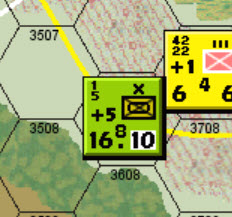
To this:

A versatile Battalion grouping with great Brigade dedicated 155s (all in that hex next to the ARVN).
B. ARVN Effectiveness Roll: I roll 1d6 On the below table and compare with my current Leaders. This is the big enchilada, who can do what for the next two loooong game turns of Fall ’65 for the ARVN.
Also I have to roll less than or equal to a Corps commander’s rating +3 or all those independent Battalions in his Corps area are Ineffective. Ineffective means they basically can’t move and do nothing all Season.
I roll a 1. As good as it gets.
Watch out NLF. Safeties are off.
Vital Stats at Interphase End
Support at Interphase End
I and II Corps at End of Interphase. Note Curt’s increase in II Corps, sprinkling the coast and building in Kontum and the area near the Cambodian Border in III Corps. And a lot of Regiments broke down everywhere. I guess Giap won out. No double-down on Aggressive War for Fall.
III and IV Corps at End of Interphase. Lots of Firepower just arrived in IV Corps. And the 18 ARVN and the ARVN Marine Divisions are ready to handle Xuan Loc.
“But now the days are short; I’m in the autumn of the year. And now I think of my life as vintage wine from fine old kegs. From the brim to the dregs. And it poured sweet and clear. It was a very good year."
Next: What will Fall Bring? Will IV Corps be cleared? Will Quang Tri be liberated? Xuan Loc? What surprises do the NLF have?
By the way, if anyone has any questions about the game or the narrative: rules, why who did what, what’s happening in the History, stuff about the music, really anything, feel free. It won’t disturb or “clutter” anything, and the initial post will be updated with bookmark quick links from time to time. I’m happy for this to be an interactive, discursive experience. If I wanted this diary chiseled on impenetrable stone, I would have blogged it. Talking about stuff here, well, it’s fun.
